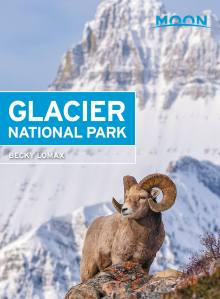Planning Your Trip to Glacier National Park
There’s plenty to see and do in Glacier National Park, whether you’re going to be there for a few days or a few weeks. If you’re only there for a day, be sure to drive over Going-to-the-Sun Road. If you have a few more days, visit Many Glacier. If you have a whole week, add West Glacier, Waterton, and Two Medicine Lake to your itinerary. If you’re lucky enough to have two weeks, make trips to the North Fork, U.S. 2, and Flathead Valley as well.
West Glacier and Apgar
West Glacier and Apgar form the park’s western portal. Divided by a nationally designated Wild and Scenic River, the area whips into a summer frenzy with white-water rafting, trail riding, fishing, kayaking, boating, hiking, and backpacking.
North Fork
Escape the crowds in the remote North Fork on Glacier’s west side. It has real rusticity, not just the look of it. Polebridge Mercantile and Northern Lights Saloon attract travelers who relish bumpy dirt roads, solitude at Bowman and Kintla Lakes, and wolf serenades.
Going-to-the-Sun Road
Glacier’s biggest attraction and the only road bisecting the park leads drivers on a skinny cliff shimmy into the craggy alpine. The National Historic Landmark crosses the Continental Divide at Logan Pass and accesses top-of-the-world trails.

St. Mary and Many Glacier
Small seasonal St. Mary bustles as a hub of campgrounds, lodges, cabins, cafés, shops, and Going-to-the-Sun Road’s eastern portal while the grizzly bear haven at Many Glacier holds the historic Many Glacier Hotel and trails to sapphire lakes and high passes.
Two Medicine and East Glacier
In Glacier’s southeast corner, the historic Glacier Park Lodge greets travelers with its flowered walkway and huge lobby. Two Medicine Lake yields a quiet contrast for hikers, boaters, anglers, wildlife-watchers, and campers.
Marias Pass and Essex
Pale next to Going-to-the-Sun Road’s drama, U.S. 2 crosses mile-high Marias Pass in the fastest route over the Continental Divide. The scenic drive squeezes between Glacier and the Bob Marshall Wilderness Complex.
Waterton
In Canada, Waterton Lakes National Park provides access to Glacier’s remote north end via boat across the international boundary to Goat Haunt, USA. Waterton Townsite bustles with boat tours, hiking, shopping, bicycling, dining, and camping.
Flathead Valley
Flathead Valley towns—Kalispell, Whitefish, Bigfork, and Columbia Falls—draw visitors for their unique personalities and outdoor reputation with boating, fishing, rafting, camping, biking, golf, swimming, hiking, and skiing.
When to Go to Glacier National Park
High Season (June-Sept.)
Summer attracts hordes when lodges, campgrounds, and trails are open. Barring deep snows, Going-to-the-Sun Road is open mid-June-mid-October, with peak visitation crammed into four weeks during midsummer. Snow buries some trails into July, when moderate weather rides in. Mosquitoes descend in early summer, wildflowers peak in late July, and huckleberries ripen in August.

Off Season (Oct.-May)
Low-elevation trails are usually snow-free in late spring and early fall, but few commercial services are open. While Going-to-the-Sun Road is closed to vehicles, bikers and hikers tour it without cars in spring and fall.
In spring, May-June rains intersperse with cobalt-blue skies. In fall, warm bug-free days and cool nights usher in the larch and aspen turning gold. Peak-top snows descend by September’s end. In winter, snow closes most park roads, which become quiet snowshoeing and cross-country ski trails.
